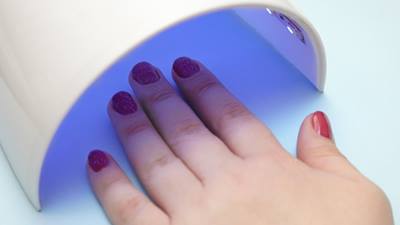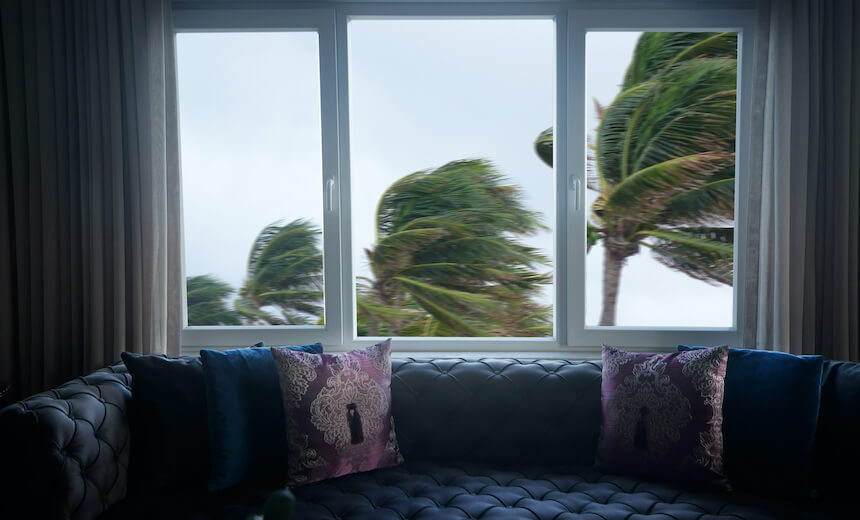Beautifully polished nails that last for weeks. That’s the promise of gel manicures, which use specially formulated nail polish and ultraviolet (UV) rays to create long-lasting results. However, the gel manicure process also can create long-term damage to the skin and nails.
During a gel manicure, the technician applies polish to your nails and then uses a UV lamp to harden the polish and bind it to the nails. The lamp emits UVA rays, which can cause cumulative damage to the skin.
Effects of UV Exposure on Skin
Frequent exposure to UV rays can lead to brown spots on the skin (solar lentigines, seborrheic keratoses, aka “liver spots”), thinning of the skin (solar elastosis), increased bruising (solar purpura), precancerous growths (actinic keratoses) and skin cancers (basal cell carcinoma, squamous cell carcinoma, melanoma and more).
The amount of damage that UV exposure can do depends on the strength of the rays, the length of time the skin is exposed, and whether the skin has any protective covering. For example, people who have had only a few sunburns in their lives will still be at-risk for skin cancer but will not have all of the widespread brown spots, dilated blood vessels, wrinkling of the skin and increased risk of skin cancers that are associated with frequent, long-term, cumulative sun damage to the skin.
There are cosmetic treatment options available to even out the skin tone as well as medications and surgical interventions to treat the skin cancers. But some damage is irreversible.
UV Rays and Skin Cancer
Both UVA and UVB rays come from the sun and can damage the skin, even leading to skin cancer. However, UVB rays are more potent and are the cause of most sunburns and skin cancers.
Basal cell carcinoma is the most common type of skin cancer and develops frequently in people with fair skin—although people with darker skin can develop it too. Basal cell occurs after frequent exposure to the sun or tanning beds, and is typically a slow-growing cancer.
Squamous cell carcinoma usually looks like a persistent, non-healing sore or abrasion that gradually gets bigger. This second most common type of cancer tends to form on skin that has had frequent exposure to the sun, such as the face, neck, ears, arms, chest and back.
Melanoma is the most dangerous form of skin cancer. It usually looks like a very dark brown or black lesion that stands out from the other moles on the skin. Look for a combination of asymmetry, border irregularities, color differences, diameter larger than 6mm and an evolving pattern of growth or other changes in appearance.
If a lesion appears that has any of the features above and has been there for at least two weeks, it’s best to see your dermatologist for evaluation. Also see your dermatologist if you’ve had previous skin cancers and you see a new spot that resembles one of your previous cancers or if you have anything that you, a family member or friend has noticed and is concerned about.
Protecting Yourself During Gel Manicures
The fact is, gel manicures can potentially increase the risk of skin cancer. Does that mean you must give up the dream of long-lasting polish? No. The key to having a safe gel manicure is to protect your skin from UV exposure.
Have the manicurist massage your skin with a sunscreen lotion instead of a plain moisturizer before they do the polish and place your hands under the UV lamp (bring your own SPF 45+ sunscreen lotion if needed). You also can wear gloves with the fingertips cut out so your hands are protected but your nails are still accessible to the manicurist.
Skin cancers are incredibly treatable if you catch them early, so it’s important to see your dermatologist for a full skin exam at least once a year. Also, even though you might like the appearance of tanned skin now, that sun damage will just give you more wrinkles, brown spots, bruises and possibly cancers down the road. Instead, opt for a fake tan at a salon or purchase an over-the-counter product and save yourself a lot of trouble in the future.
Your skin is the largest organ in your body and you’re stuck with it for life, so take good care of it!
Choose to Stay in Touch
Sign up to receive the latest health news and trends, wellness & prevention tips, and much more from Orlando Health.
Sign Up for HealthBeat









